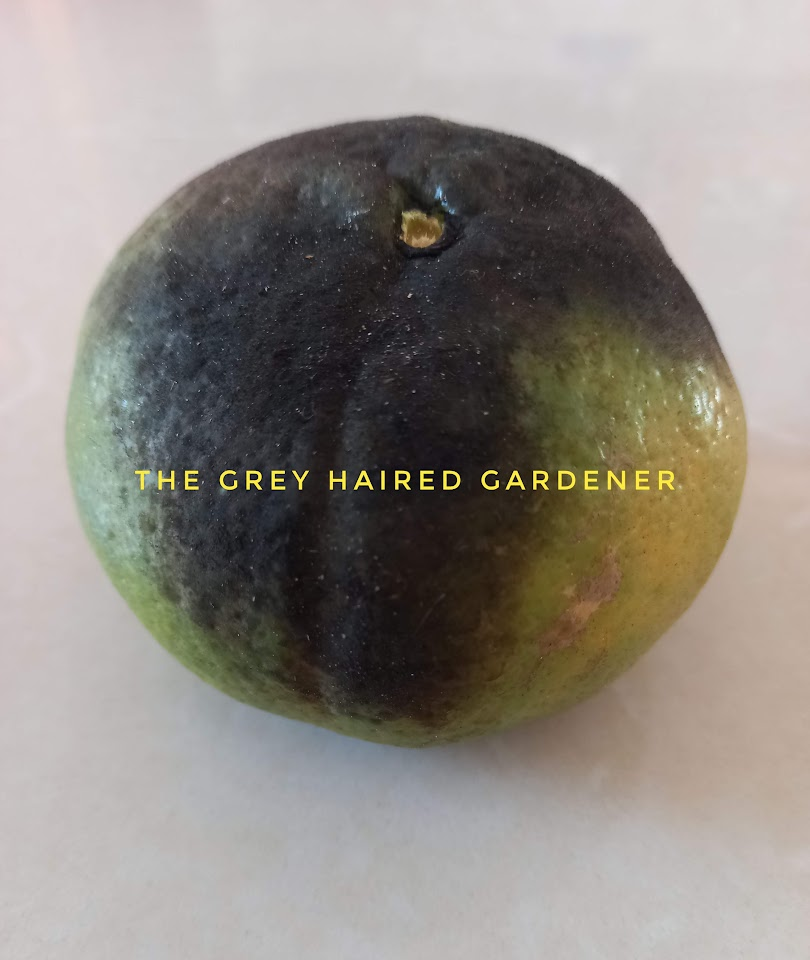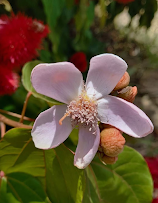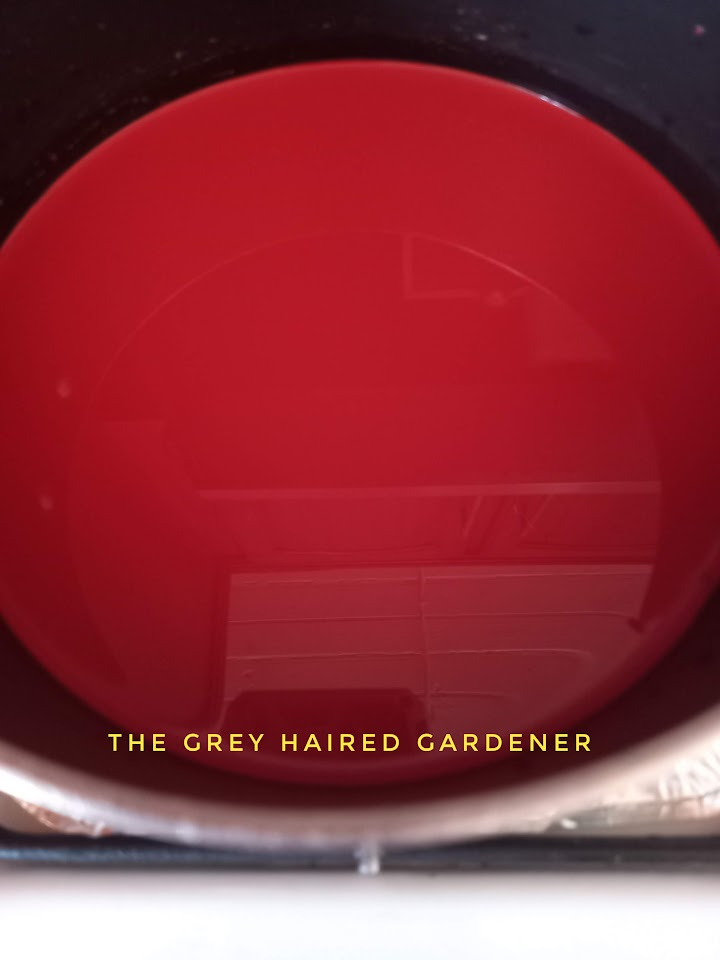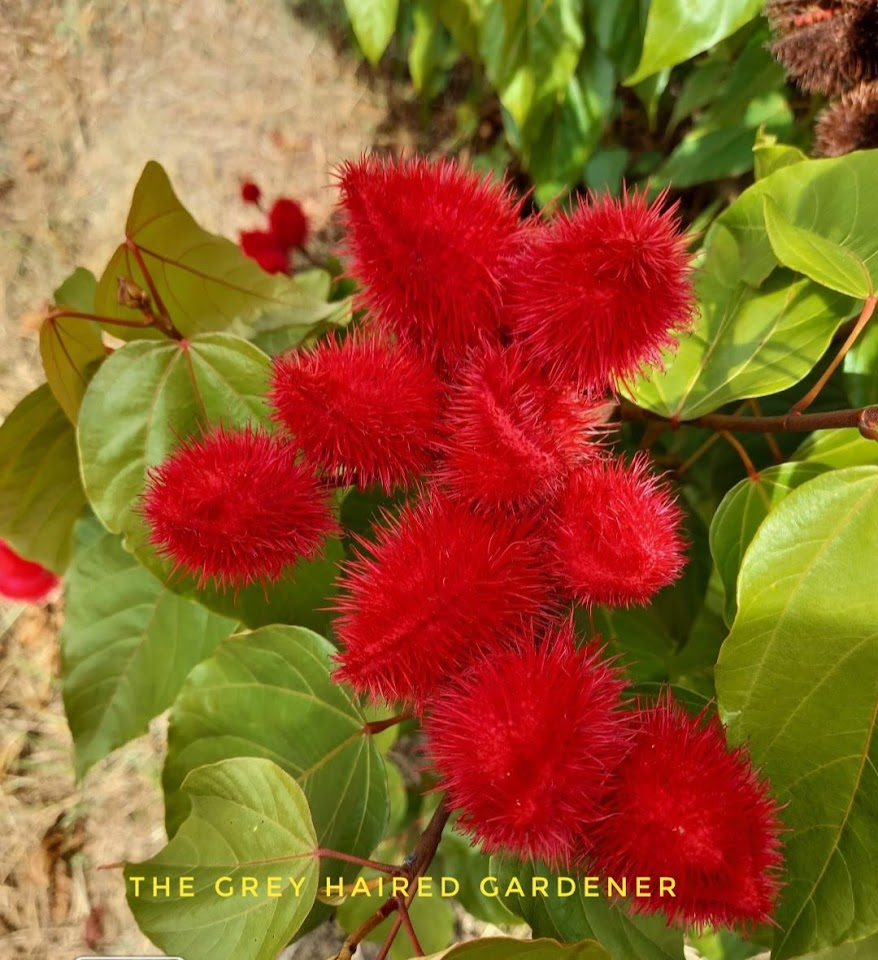I always look forward to my trips to the market. It’s one of my favorite places to wander, and I never miss a stop at the plant stall. I usually pick up my staple lettuce plants to ensure a steady supply of fresh greens for my daily salads. But let’s be honest—half the fun is seeing what new plants are up for grabs!
On my last trip, I spotted something I hadn’t seen in ages—beautiful flowering balsams! As kids, we used to call them “lady slippers,” and I had my own little garden space filled with them in a rainbow of colours. Nostalgia hit hard, and I couldn’t resist. I had to take one home! (Though, let’s be real—who buys just one balsam?) My sister claims the garden has no more space, but any plant lover knows there’s always room for one more. Always!
This particular balsam was a real stunner—bright fuchsia with double petals. The vendor only had one colour that day but promised to bring more varieties in the coming weeks. So, you know exactly where I’ll be on my next market run! I even managed to trade a few seed pods for a soft pink variety from a new gardening friend.
Now, let’s talk about why balsams are such a fantastic addition to any garden. These annuals bring vibrant colour to borders, mixed planters, or even a dedicated flower bed. They don’t just look good—they attract bees, butterflies, and hummingbirds, making them an eco-friendly choice that supports pollinators.
Growing and Caring for Balsams
Propagation
Balsams are ridiculously easy to grow. You can start them from seeds or cuttings. Their seed pods mature and pop, scattering seeds naturally. If propagating from cuttings, simply take a clean, sharp knife and snip a side branch, leaving about half an inch below a leaf node. Stick the cutting into moist potting mix and water well. In about a week, tiny white roots will begin to appear. Within two to three weeks, your new plant will be ready for transplanting into larger pots or directly into the garden.
Fertilizing for Success
Young balsam plants thrive with a phosphorus-rich starter feed to establish strong roots. Another great option is incorporating well-rotted manure or compost into the soil for an organic boost. Once the plants mature, switch to a balanced fertilizer like 20-20-20 to maintain overall health and vigour. When flower buds start appearing, switch to a high potassium feed to encourage abundant blooms.
Soil & Location
Balsams prefer well-drained, loamy soil enriched with compost. Avoid heavy clay soils that retain too much moisture and can cause root rot. If planting in containers, ensure good drainage.
They love the sun but can also tolerate a few hours of partial shade. Be mindful of extreme heat, as it can cause them to lose moisture quickly. Regular deep watering, especially during hot spells, will keep them thriving.
Pests & Diseases
Aphids love balsams, often targeting tender new growth and flower buds. These tiny pests cause leaves to curl and become distorted as they suck out the plant’s sap. A simple spray of neem oil or insecticidal soap in the evening can keep them under control.
Powdery mildew is another common issue, appearing as a whitish-grey powder on leaves and flowers. Improving airflow around the plants can help prevent it, but if the infection is severe, a fungicide labeled for powdery mildew will do the trick.
Final Thoughts
Growing balsams is incredibly rewarding. They’re easy to care for, burst into vibrant blooms, and attract beneficial pollinators. Whether you tuck them into a mixed flower bed, line your pathways with their cheerful colours, or let them self-seed for a surprise next season, these plants bring undeniable charm to any garden. So, why not give them a try? The joy of watching them flourish—and maybe even trading seeds with fellow gardeners—makes it all worthwhile!
Happy Gardening!
The Grey Haired Gardener


























.jpg)

